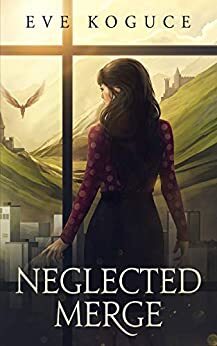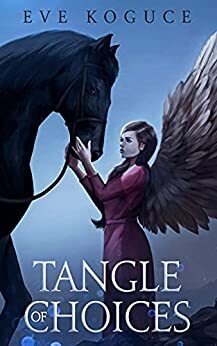Beth Tabler's Blog, page 210
December 1, 2021
Review – Dark Oak by Jacob Sannox
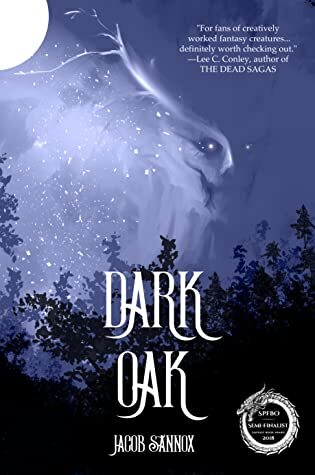 check it out here
check it out here BOOK REVIEW
dark oak by jacob sannox December 1, 2021 9:00 pm No Comments Facebook Twitter WordPressOh my!”Dark Oak”!
This book is the first installment in a series, written by extremely talented British dark fantasy author Jacob Sannox. For those not familiar with his work, both “Dark Oak” and another series starter of Sannox’s called “The Ravenmaster’s Revenge” (which I also read and loved) won the author Self-Published Fantasy Blog-Off (SPFBO) semi-finals glory, two years running. This should tell you a lot about the high calibre of this particular author’s writing.
As you can likely guess by my enthusiastic exclamation at the beginning of this review, this book was absolutely phenomenal, and though his debut novel, not taking anything away from marvellous “The Ravenmaster’s Revenge”, for me this was Sannox at his finest.
The concept of “Dark Oak” is quite imaginative and refreshing. The story is set in a period directly after the nominal “big baddie” Dark Lord that haunts so many fantasy books – in this case named Awgren – has been vanquished by an alliance of humans. These humans are led by the formidable Queen Cathryn and her royal consort, the vigorous and redoubtable Lord Lachlan. Allied with these two high nobles are powerful vassals, including the intimidating Lord Linwood, and the clever Lord Aldwyn.
After defeating Awgren, humans who were coerced into fighting on the side of the Dark Lord are branded as traitors, and despised, even if their participation on the side of Awgren was involuntary. But one such human, Morrick, a sergeant and highly capable leader among his troops, manages to survive the conflict, and prove himself worthy to Aldwyn. Morrick, bringing the last remnants of his men with him, enters into Aldwyn’s service. But all Morrick truly wants is to find his way back to his family, including his wife, Rowen, their two young sons, and a newborn daughter, and live in peace.
Meanwhile, Rowen, a charismatic leader herself, chafes under the rule of those humans selected by the Dark Lord and his inhuman minions. She has thoughts of revolution on her mind, and while her husband is away, fighting on the wrong side, Rowen makes her own plans to free her people from oppression, and forge a new life for herself and her children, with or without her husband.
But jockeying for power, intrigue, back-stabbing, hubris, naked ambition, tragedy, utter selfishness, and descent into madness plague some of the humans in the story, as their realms are torn apart by internal conflict in the aftermath of Awgren’s defeat. All the while, in secret, great magical, immortal powers exist in the form of Dryads, Naiads, Oreads, Sylphs, and other fantastical creatures, whose existence is threatened by the wars and expansionist tendencies of the humans. And these powers will not stand for humans willful disregard of their ancient territories. Humans are a threat to these powers, and a threat that must be dealt with.
The book has some of the most intriguing characters I have read in this type of work, and they are incredibly well-written. Rowan’s anger at her husband, who she feels has abandoned her, her courage, her desire to protect her children are so real and vivid, one can empathize with how – though it is troubling to watch – she turns against Morrick. Morrick’s respect for nature, despite his vocation as a woodcutter, and his quest to reunite with Rowan and his children, is palpable.
Lachlan’s aspiration for freedom, adventure and being unencumbered of ruling, but rather mainly living to fight; Aldwyn’s regret over a lost love; Cathryn’s ambivalence towards her people at times; Linwood’s grasping zeal for more power, all make for provocative and believable, if sometimes unlikable human characters. But as though who know me know, I have no issue whatsoever with unlikable characters, and love the realism when they appear in books. It takes a lot of writing skill to make a reader want to read about those types of people, and wonder about their fates: Sannox has this type of skill.
But for me, the Dryads stole the show. Riark, King of the Dryads, was by far my favourite character. His implacable, single-minded desire to protect the forest, and confidence in the rightness of his actions, regardless of the consequences, come back to haunt him, despite all his logic, pragmatism, and power. Riark is stately, regal, wise, and flawed, and he is the embodiment of one of the recurring themes of the novel that I found so compelling: what are the responsibilities of leadership and protecting one’s followers, how is it balanced with one’s own personal desires, and at what cost.
The prose and descriptive writing of Sannox are assuredly first-rate, hearkening back to the classic style that I completely adore. Save for an odd, modern colloquial “It is what it is” that seemed out of place, Sannox’s writing, at times during the book, is so good, so lyrical, and his imagery so outstanding it can hold up beside some of the greats such as John Gwynne, Bernard Cornwell, and even dare I say GRRM and JRRT.
The plot is incredibly paced, and putting this book down for any length of time is not an option. At an ideal length of just around 300 pages for an epic dark fantasy novel, “Dark Oak” is not too long, not too short. The ending is heart-wrenching, beautiful, and very very dark. As is the whole book, from an overall perspective. Be warned reader, lots of emotional and physical distress in this book, and the reader will feel ruined, at moments, over the fate of some of the characters. But an unforgettable book that stays with you, is a great book, and make no mistake, “Dark Oak” is a great book.
In terms of criticisms, the story has multiple POV’s and there are times Sannox head-hops a bit within POV scenes, but that would be a trifling complaint, and actually had no bearing on my immense enjoyment of the book. The transitions were rather seamless in this regard, for me, but for those who really do not like that sort of thing, they might feel a tad confused.
The ending to the book is mind-blowing, and that is all I will say, for I refuse to spoil it, as I want this book to be read a widely as possible, hoping others enjoy it as much as I did.
I will be pressing “buy” ASAP to pick up the sequel “Age of the Dryad”, for “Dark Oak” is easily one of the best five or so books I have read in 2021 among some fantastic novels.
Check Out some of our other reviewsReview – The Final Girl Support Group by Grady Hendrix
Review – The Devil and the Dark Water by Stuart Turton
Short Story Review – Save, Salve, Shelter, by Essa Hansen
P.L. Stuart
I’m an experienced writer, in that I’ve been writing stories all my life, yet never thought to publish them. I’ve written informally – short stories – to entertain friends and family, for community newspapers, volunteer organization magazines, and of course formal papers for University. Now, later in life, I’ve published what I believe is a great fantasy novel, and definitely worth reading, called A Drowned Kingdom. My target audience is those who enjoy “high fantasy”. A Drowned Kingdom is not “dark fantasy”. It’s written in a more idealized and grandiose style that I hope isn’t too preachy, and not too grim. Still, I’m hoping my book has appeal to those who don’t typically read this type of work – those who don’t read fantasy of any kind – because of the “every-person” themes permeating the novel: dysfunctional familial relationships, extramarital temptation, racism, misogyny, catastrophic loss, religion, crisis of faith, elitism, self-confidence, PTSD, and more.
Many of these themes I have either personal experience with, or have friends or family who have dealt with such issues. I’ve had a long professional law enforcement career, undergone traumatic events, yet been buoyed by family, faith, and positivity. I’m a racialized middle-aged man. I’ve seen a lot of life. Ultimately I want the planned series, of which A Drowned Kingdom will be the introduction, to be one of hope, and overcoming obstacles to succeed, which I believe is my story as well. My protagonist, Othrun, will undergo a journey where he’ll evolve, change, and shape a continent. He’s not always likeable. He’s a snob, bigot, is vain, yet struggles with confidence. He’s patriarchal. Overall, he’s flawed. But even ordinary flawed people can change. We’re all redeemable.
Ordinary people can make a difference, not just fictional Princes. I want that message to shine through my work.
WHERE TO FIND HIMTwitter – @plstuartwrites
Facebook – @plstuartwrites
If You Liked This - Please Share the LoveNovember 30, 2021
Graphic Novel Review of “The Arrival” by Shaun Tan

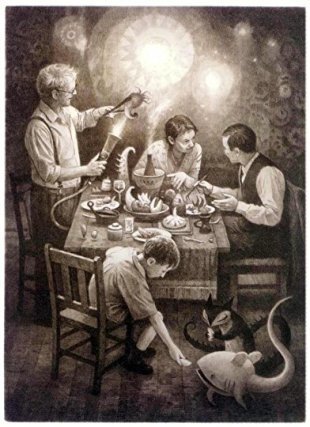
From the publisher, “In a heartbreaking parting, a man gives his wife and daughter a last kiss and boards a steamship to cross the ocean. He’s embarking on the most painful yet important journey of his life- he’s leaving home to build a better future for his family.
Shaun Tan evokes universal aspects of an immigrant’s experience through a singular work of the imagination. He does so using brilliantly clear and mesmerizing images. Because the main character can’t communicate in words, the book forgoes them too. But while the reader experiences the main character’s isolation, he also shares his ultimate joy.”
My Thoughts“Give me your tired, your poor,
Your huddled masses yearning to breathe free,
The wretched refuse of your teeming shore.
Send these, the homeless, tempest-tost to me,
I lift my lamp beside the golden door!”
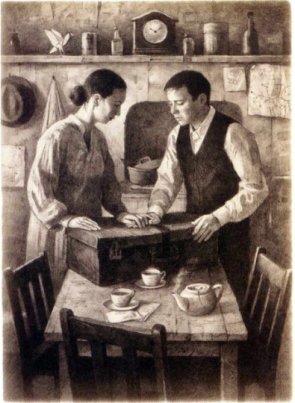
Do you think an image can speak a thousand words or maybe ten thousand words?
Do you think that an image could speak for you when you don’t know the language and the only way to communicate is through hastily drawn art on scrap paper?
That is what Shaun Tan has done. He created a graphic novel that speaks to the immigrant experience. What it is like moving to a foreign land, faced with alien food, language, buildings, and pretty much everything else, but uses no language, except for the language of imagery and absolutely incredible imagery at that. Reading this book, I felt like I was sitting down to watch a silent movie, popcorn in hand. The imagery is so poignant, so much so that it seems like the pictures could move right out of the pages.
The focus of the story is about a man leaving his small family in search of a better life for them all. The book moves quickly, but he arrives at the new land and he is examined, cataloged, and labeled. Everywhere he goes, there is something new for him to learn. It is exhausting and boldly exciting at the same time.
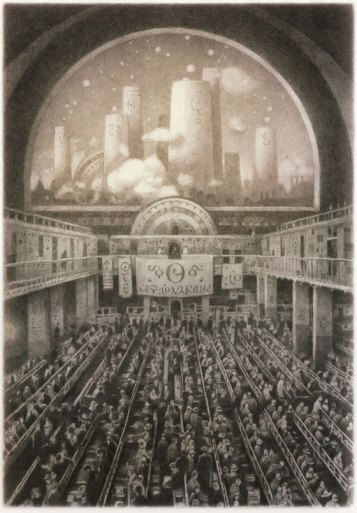
I can’t speak for other people, but I can definitely speak for myself when I say when people step outside their comfort zone and do something as scary and bold as to move to another country in search of something they should be lauded too. This book was a great reminder of that. A beautiful reminder. It should also be noted, that this book is not political in nature at all. It isn’t about politically what it means to be an immigrant, but more of what beauties and joys are found in the discovery.
ConclusionIf you can’t tell already, I love this book. I think it is an important work for the world right now and I highly recommend anyone to read it. Come on over, I have a copy of it sitting on my bookshelf I’ll loan it to you.
REVIEW – SUNDERED SOULS BY TIM HARDIE
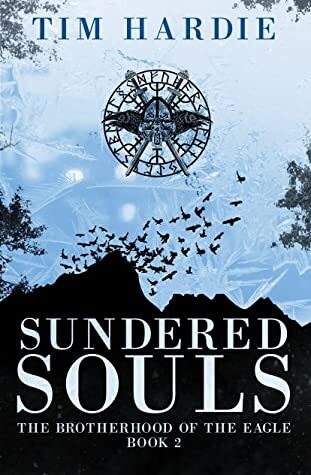 check it out here
check it out here BOOK REVIEW
SUNDERED SOULS by TIM HARDIE November 30, 2021 10:00 am No Comments Facebook Twitter WordPressWARNING*** Although this is a review of Book Two “Sundered Souls”, this review contains potential spoilers for Book One of Tim Hardie’s “Brotherhood of the Eagle” series entitled “Hall of Bones”.
Tim Hardie’s “Hall of Bones” is an exceptional, Norse-Inspired fantasy that for some reason had snuck below the radar of some readers of this type of book. No longer. “Hall of Bones” is now a finalist in Mark Lawrence’s Self-Published Fantasy Blog Off (SPFBO7). So, with this type of recent acclaim, the word is officially out now for those epic fantasy fans who were not aware: Tim Hardie is an outstanding author.
I believe one of the most difficult accomplishments for a writer is to make the second installment in a series better than the debut. As excellent as “Hall of Bones” was, Tim Hardie delivers an even better book with “Sundered Souls”.
The novel picks up where “Hall of Bones” left off. The Brotherhood of the Eagle, considered a rogue army by some, has discovered an ancient malevolent force that is the true danger to their beloved land of Laskar. This force is driving the events we say transpire in “Hall of Bones”, where Adalrikr Asmarrson, the self-proclaimed King in the North, has conquered swaths of land in Laskar, including parts of the strategically-critical fortified land of Reavesburg, through Adalrikr’s Vorund Clan.
The King of the North and has vowed to destroy all who don’t bend knee to him, and those who stand in his way of complete domination. The sinister fact is that Adalrikr also controls the Durath, wraiths who peddle in people-possession. The Brotherhood of the Eagle are the only ones who understand the dangerous, heinous magic being wielded by Adalrikr. The Brotherhood must convince rival clans – who believe they are only fighting mortal enemies led by Adalrikr – that the evil ruler must be defeated at all costs, to save the entire land from a fate far worse than merely conquest.
Johan Jokellsward, called the “Landless Jarl”, a redoubtable lord, leads The Brotherhood, which is a tough but rag-tag, transient band of soldiers, civilians, and refugees, which internally must battle mistrust and suspicion, as deep clan loyalties cause potential for divisiveness. Johan relies primarily upon the main protagonist, former Reavesburg nobleman Rothgar Kolfinnarson, as his chief advisor, along with the extremely aged crone Etta, who used to be the main counsellor to Rothgar’s father.
Rogthar, who at one time was a capable warrior, crippled by the Vorund Clan, is able to contribute Johan’s aims in other, even more important ways than battle. Rogthar, taught by his friend, the mage Joldir, can use “The Sight”, whereby he can access the thoughts, perceptions, and experiences of others. This talent is invaluable in combatting Adalrikr and the Durath.
But Rotghar is beset by peril. The son of the former chief of Reavesburg worries about his sister Nuna, seemingly far away from the main war, but in jeopardy due to those with magical powers and unknown motives, who surround her. Rothgar is also stalked by the witch Nereth, who holds a personal vendetta against Rothgar, and Nereth won’t relent until all Rothgar cares about is taken from him.
Gautarr Falrufson, a former rival of Rothgar’s, is the leader who occupies what used to be Rothgar’s home. Gautarr is besieged by Adalrikr’s troops, and Johan wants to join his men with Guatarr’s to vanquish the enemy. The question becomes, will Gautarr and his men – and Johan’s, including Rothgar – be able to put aside old quarrels, to unite and defeat their common foe?
Sundered Souls maintains all the best elements of “Hall of Bones”, but Hardie ratchets up the tension by several degrees. All of the bitter feuds, contention, and vying for clan supremacy, continue, in the backdrop of needing to come together and eschew such petty fights to face the greater existential threat. There is a constant, lingering dread hanging over the novel, as readers will worry that bickering and animus will torpedo the humans’ ability to defeat the spiritual army of Adalrikr. The personal grudges and political jockeying is extremely well played out by Hardie.
So skillfully, in fact, as dare I say he could approach the great G.R.R. Martin in the distant future. Yes, high praise, but I believe Hardie has that kind of ceiling as an author, and he writes that kind of book, with a grandiose feel. Few writers do warring factions, rife with unexpected consequences, betrayal, and high stakes, on an extremely epic scale, better than Hardie.
As a huge fan of political intrigue and feuding sides, replete with rich history and genealogy, I am now a officially Hardie fan for life, and this was the aspect of the novel I loved best. On an aside, I strongly recommend the reader refer to the excellent character list and breakdown of the clans, and who is on whose side, provided by the author, in the back of the book. GRRM would no doubt admire this feature Hardie has provided, to keep the reader from potentially being confused.
Hardie’s worldbuilding is fantastic, balancing exquisitely the supernatural and the “real”. The prose is smooth, and beautiful, and Hardie’s exposition and evocative writing is just the right touch to keep the reader feeling they are immersed in a fully realized world and its surroundings, while still being “in the moment” of all the action. It’s difficult to pick up book two in a series without reading book one, but I admired Hardie’s ability to provide enough salient information (but not too much) about prior events in “Hall of Bones” so that a reader could literally pick up book two and have an understanding of what has gone before.
The character development is excellent, truly building and improving upon what was provided in “Hall of Bones”. The main character, Rothgar, slowly comes to accept his new circumstances, his limitations, his unique role to play in the war, and what he can do with the newfound abilities he possesses. He matures, shows off his political acumen and savvy, while remaining quite human, capable of being impetuous, petty, doubting, and making mistakes.
The adroitness of Hardie dealing with Rothgar’s disability, the new agency (and introduction of additional) of female supplementary characters, and weaving all the emerging character arc threads together (with a lot of characters who encounter each other after some time apart) really shined in “Sundered Souls”. With such a sprawling cast, those who are not a fans of huge amounts of characters may be a bit discouraged, but Hardie keeps the scenes intimate enough that the character list feels smaller than it is. All the characters, heroes and heroines, villains, and everyone in between, are very well drawn and believable, as are their positives, faults, disputes, and desires.
I must speak about the book’s great pacing. The narrative drives relentlessly forward, while all the juicy details and intriguing plot threads I wanted to be expanded on, were discussed to my satisfaction. And that narrative is headed towards a brutal climax! The book’s concluding chapters are pure dynamite!!!! The end is bloody, thrilling, and will leave you speechless!!!
“Sundered Souls” is a wonderful book, easily a five-star read, and I feel it cements Tim Hardie as a fantasy star on the rise. Without question, I will be buying anything Tim Hardie writes, and confident I will immensely enjoy it, as I did “Sundered Souls.”
Check Out some of our other reviewsReview – The Devil and the Dark Water by Stuart Turton
P.L. Stuart

I’m an experienced writer, in that I’ve been writing stories all my life, yet never thought to publish them. I’ve written informally – short stories – to entertain friends and family, for community newspapers, volunteer organization magazines, and of course formal papers for University. Now, later in life, I’ve published what I believe is a great fantasy novel, and definitely worth reading, called A Drowned Kingdom. My target audience is those who enjoy “high fantasy”. A Drowned Kingdom is not “dark fantasy”. It’s written in a more idealized and grandiose style that I hope isn’t too preachy, and not too grim. Still, I’m hoping my book has appeal to those who don’t typically read this type of work – those who don’t read fantasy of any kind – because of the “every-person” themes permeating the novel: dysfunctional familial relationships, extramarital temptation, racism, misogyny, catastrophic loss, religion, crisis of faith, elitism, self-confidence, PTSD, and more.
Many of these themes I have either personal experience with, or have friends or family who have dealt with such issues. I’ve had a long professional law enforcement career, undergone traumatic events, yet been buoyed by family, faith, and positivity. I’m a racialized middle-aged man. I’ve seen a lot of life. Ultimately I want the planned series, of which A Drowned Kingdom will be the introduction, to be one of hope, and overcoming obstacles to succeed, which I believe is my story as well. My protagonist, Othrun, will undergo a journey where he’ll evolve, change, and shape a continent. He’s not always likeable. He’s a snob, bigot, is vain, yet struggles with confidence. He’s patriarchal. Overall, he’s flawed. But even ordinary flawed people can change. We’re all redeemable.
Ordinary people can make a difference, not just fictional Princes. I want that message to shine through my work.
WHERE TO FIND HIMTwitter – @plstuartwrites
Facebook – @plstuartwrites
If You Liked This - Please Share the LoveNovember 29, 2021
Short Story Sampler: The Century Blade by Rob J. Hayes
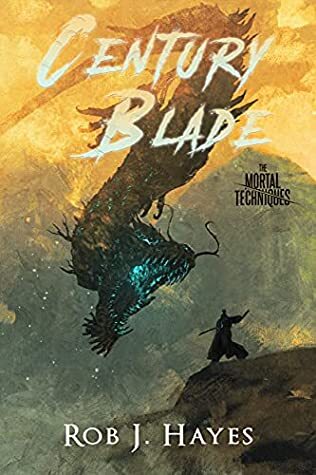 check it out here
check it out here BOOK REVIEW
century blade by rob j. hayes November 29, 2021 1:59 pm No Comments Facebook Twitter WordPress“He wanted no gold, no power, no servants, or fame. Su An wanted only one thing. To be forgotten.”
A book is a commitment. Reading a book takes time.
There are many ways to test a book before you decide if it is worth your time. You can read the blurb, nod your head along and think, yes—yes, this sounds amazing. You can peek into the first chapter or two and see if you get sucked in so strongly that you just have to keep going.
But there are some things that this does not tell you about the author. Like can they carry the story all the way through without getting lost? Will the points that they hit along the way make your heart sing or sink you into despair? Both of these things are valid points to hit for the right reader. Will their finale leave you completely wowed or underwhelmed?
A pleasant alternative is to seek out short stories from that author. A sampling, if you will. This must be done with the proper respect to what a short story is and what it isn’t, however. There are things that it simply cannot do.
Rob J. Hayes opens “The Century Blade” with a strong voice. It’s the voice of a storyteller. Somewhat detached from the story itself, it feels like you met some guy in a bar and are now swapping tales. It winds its way through Hayes’s words, flowing as a dragon would through the clouds, carrying the weight of myth and legend.
It tells you the story like maybe it is one that you have been told before, and feel free to ask the narrator to stop at any time if you have questions. The story unfolds as if the narrator doesn’t quite know what kind of story-eater you are yet, and it is feeling around for the parts that you like best, carefully gauging your reactions.
In this story, Su An meets his enemy, a dragon, three times. Hayes shows a traditional appreciation for the rule of three and the escalation of conflict. Each interaction grows in both stakes and action. Someone is always brought to their knees, humbled.
Hayes shows his worldbuilding strength and his character depth. There’s more to each character than what is on the page. They each hold their mysteries and motivations just out of reach. The dragons, great mythical creatures that they are, have motivations and depth.
Su An, the main protagonist, seems clearly noble in contrast, but the legend-like nature makes me question the truth in this. It feels like a character that doesn’t want to be known has a very good reason to keep his secrets. Some readers might struggle with the number of characters in the story, but Hayes tells you just enough about each one that they are distinguishable.
Hayes’ sense of humor is one that I personally appreciate. Most of his story flows with intensity and solemnity, but his mention of a very specific sidekick is not only cute, but a peek into the character of Su An, the Century Blade himself.
Hayes seems to have a handle on voice, conflict/plot, worldbuilding, character and humor. I only give “The Century Blade” 4 stars because I have heard the intro to his latest book, Spirits of Vengeance, and that opening drips with an immersive fire. It feels like Rob J. Hayes is saving his best writing for his novels, which is as it should be.
4/5 stars
Check Out some of our other reviewsNovember 28, 2021
SIX ELEMENTALS AUTHOR INTERVIEW WITH EVE KOGUCE

Six Elementals Author Interviews will introduce prospective readers to some of the best writers in their genre you may, or may not, have heard of, via a series of six questions. I encourage you to check out the work of these phenomenal creatives! Links to their websites and purchase links will always appear, accompanying the interview. Check them out!
I am privileged to be joined by the award-winning romantic fantasy author, Eve Koguce! Eve’s current published works are: Neglected Merge and Tangle of Choices.
P.L.: Thank you so much Eve for joining me today! You hail from beautiful Latvia, a unique country, filled with astounding scenery, a vibrant and compelling history, and rich literature and diverse authors worth exploring. How has growing up and living in Latvia, and Latvian writers, influenced your writing?
Eve: Thank you, P.L., for inviting me. It’s a great pleasure and also an honour to talk about my books with the author of one of my favourite novels.
For me, the proverb “East or West, home is best” is a life motto. I can talk about my beautiful country for hours. I’ve travelled rather extensively around Europe, and I also spent a few years living in the picturesque South West England. And still, I haven’t seen a place that would surpass my home town, Jurmala. Imagine almost thirty kilometres of a sandy beach fringed with pine forest. You can walk for hours, breathing in the salty air and listening to the gentle whispering of the relentless waves.
I’ve been blessed to grow up in a multicultural environment. My mom always told me that languages are what makes a person truly rich. I’m grateful to her that she’d encouraged me in my studies.
I’ve always been mesmerized by books. Since I was six, the words weren’t simply letters on pages: they were music. During the most romantic years – when I was a teenager – I wrote a lot of poetry in three languages. The only thing that I feel sorry about is that I hadn’t learnt my mother’s native tongue. Her sister, my mom’s aunt who raised me and was like a grandmother to me, and mom spoke Tatar at home, and when I was little, I did understand them. But, alas, I didn’t take pains to learn it properly.
In high school, my Latvian language teacher taught me the beauty of my home country language. She spoke as if she was singing. I could listen to her telling us about Latvian literature, its poets and novelists, for much longer than the classes lasted. One of the brightest personalities in Latvian literature is, of course, Aspazija (Aspasia), poet and playwright.
Truly, the legendary woman. There is a unique museum in my hometown Jurmala: the house where Aspazija spent the last years of her life. She loved our sometimes grim but always absolutely magnificent seaside, and recently, there appeared a charming monument that, in my opinion, does this extraordinary woman justice. I like “visiting” Aspazija – and her cat! This lovely feature breathes warmth into a statue. I just stand there by her, and look at the sea, trying to imagine how the inspiration flew through her mind when she’d been coming to this very place.
I must beg your pardon for the crude translation of Aspazija’s poetry, but I wanted you and the readers of your blog to feel through the lines the soul of this talented woman, whom fate treated harshly, and still, the light of her talent stayed with her, and her creative light continues to shine for us from the lines of her poetry.
One of my favourite poems by Aspazija is called “Away into the beautiful”. The entering lines are as follows:
Like a seagull, rising over the sea waves…
Among the storm when one can’t see a thing,
Let me – a boat of sinking life-
Raise the wings of my soul like a sail.
P.L.: I truly appreciate the compliment about A Drowned Kingdom, and so glad you enjoyed reading it. Oh my Eve, thank you so much for sharing memories of your childhood, your homeland, and speaking about what has inspired you! Lativa sounds beautiful and I would love to visit there one day, especially based on your lovely description. That was a beautiful poem by Aspazija! Your wonderful mother, your language teacher, creatives such as Aspazija seem to have truly motivated you in terms of your writing, and that is amazing! We all know, unfortunately, inspiration is sometimes absent, no matter what we do. How do you cope with writer’s block, when the inspiration is just lacking to write?
Eve: So far, I’ve written three books. And this experience has taught me that discipline is vital for a writer. Inspiration is, undoubtedly, important, and without it, I believe, there is no creative spark that ignites and fuels the whole process of writing a book. Still, a writer should self-train discipline.
I like reading motivational non-fiction books. I don’t expect a guaranteed solution to all problems there are in our world, but I take something valuable from each of them. Right before I started writing “Tangle of Choices”, I’d read a book my husband was reading. And the excellent piece of advice I got from that book was: just sit down and do what you have to do.
It might not work at once, you might spend some time uselessly staring at the blank screen, but it’ll pass. And it worked! True, I spent a day following that peculiar dance of a blinking cursor, but when I sat down to write the next day, the words simply started to flow from under my fingers.
P.L.: That is excellent advice, for all of us who struggle sometimes just to get a word on the page. How do you feel about the current state of self-publishing today? Do you feel self-publishing is a viable path compared to being traditionally published? What made you decide to self-publish your books as opposed to traditionally publishing them?
Eve: In order to give my opinion some weight – which is arguable anyway  – let me begin with confessing that I sent around seventy query letters for “Neglected Merge”. When I completed my first novel, I didn’t know the option of self-publishing existed. So, the traditional publishing road was the only one I saw for myself.
– let me begin with confessing that I sent around seventy query letters for “Neglected Merge”. When I completed my first novel, I didn’t know the option of self-publishing existed. So, the traditional publishing road was the only one I saw for myself.
When it became clear that my book wouldn’t be accepted by literary agents, I confessed to my husband that I wrote a book. And it was he who persuaded me to try to self-publish. I probably wouldn’t have listened to him if I hadn’t received some personalised and positive feedback from literary agents. Although they rejected my manuscript, they admitted that they liked the idea of the book and my writing style.
From what I’ve seen during my self-publishing journey so far, I’ve come to a conclusion that there are two things that make this path a challenging one. First, marketing and promotion opportunities. Big publishers have resources, skill, and experience to tell people why they should read that book. They know the tricks and techniques to make people feel that they need to buy and read it. That their life will become better if they do. I know how it works since my Bachelor’s degree happens to be in Marketing. And second, there are too many titles published by too many authors.
In case of self-publishing, Amazon did remove the “gate-keepers”. Everyone can publish their work now without spending a fortune on printing hundreds of their books they’d store in their garage forever. But the road behind those gates remained the same. An extremely bumpy one with many obstacles, challenges, riddles, and even highway robbers.
Many indie authors, I’m sure, are “bombarded” by lucrative offers to “boost their sales and showcase your books to millions of readers”.
So, I’d say that traditional publishing still remains the only road to real success, such as every aspiring writer sees as their ultimate goal and dream. Still, self-publishing can be satisfying and fulfilling in many ways. The books you’ve written – given life from the most sacred chambers of your soul – get a chance to become real books, not manuscripts, drafts, etc. And for me personally, few things compare to the feeling when I look at the book with my name on it sitting on my – too crowded and too numerous – bookshelves.
P.L.: Writing a book, no matter how you do it, I agree Eve, is a major accomplishment. What are some of your favourite novels and writers?
Eve: There are so many books that have given me more than just an experience of reading a story. But to save your website’s space and your readers’ time, I’ll name three.
“Gone with the Wind” by Margaret Mitchell, “The Handmaid’s Tale” by Margaret Atwood, and the book that’s been my personal top number one for more than twenty years, “Pride and Prejudice” by Jane Austen.
“Gone with the Wind”, despite all the controversy that has been surrounding this legendary novel for decades now, remains the most fascinating read for me. I’ve reread it recently, and my impressions were as vivid as they always are when I dive into the world of the American South. I have to say that for me, first and foremost, this is a story about major changes.
As a person who’s lived through such changes – when the country you were born in ceases to exist and, in its place, emerges a completely different one – I can’t be swayed in my conviction that Margaret Mitchell’s only work is a phenomenal depiction of changing times. What I find the most fascinating about it, is that details don’t matter. Time, geographical location, the gist of the conflict between the confronted parties don’t matter. The process and the consequences are absolutely the same. Rhett Butler tells Scarlett that there is always someone who earns their wealth on the misery of war. And it’s true for any event that changes the lives of thousands of people.
When asked what “Gone with the Wind” was about, Margaret Mitchell said: “If the novel has a theme, it is that of survival. What makes some people come through catastrophes and others, apparently just as able, strong and brave go under? It happens in every upheaval. Some people survive, others don’t. What qualities are in those who fight their way triumphantly that are lacking in those that go under? I only know that survivors used to call that quality “gumption”. So I wrote about people who had gumption and people who didn’t”.
I’ve witnessed many cases of able, strong and brave people go under, crushed by circumstances they couldn’t influence or overcome. My mom did have “gumption”. When faced with challenges the new world threw at her – and one of such challenges was an unbearable burden of raised taxes, just like in “Gone with the Wind” – she used that ability to adapt and find ways to survive. I know that she would have put that green velvet dress made from old curtains into good use, although among her weapons for fighting “the slings and arrows of outrageous fortune” were mainly her courage, honesty and optimism.
For the first time, I read “The Handmaid’s Tale” long before the novel was turned into a series. And I was completely taken in by the world Margaret Atwood has created. What I adore the most about this book is that there aren’t explicit details, descriptions or explanations. Everything is told very briefly. But the essence of it crawls right through your skin, and you are terrified. That’s what I see as the true power of literature.
P.L.: Those are some well-known books you have mentioned, that, regardless of what one may think of them, have surely had an impact on literature as we know it. Please tell potential readers who have not yet read your work about your current series, The Neglected Merge Series! What’s it all about?
Eve: The Neglected Merge trilogy is about people adapting to major and smaller changes.
Book one “Neglected Merge” is what one can call a love story. Still, it makes me happy that some readers see beyond it and say that there is more to it. “Neglected Merge” tells a story how two people from different worlds managed to ignite a spark of change and put into motion the process of revitalisation of relations between their estranged nations.
Book two “Tangle of Choices” is a drama. It explores the consequences of decisions people make led by the noblest intentions. Power brings not only privilege but also responsibility. The main character, Tauria, faces the hardships of being a responsible and caring leader, and all parts of her established life are being threatened: her marriage, her friendships, and even her sanity.
And book three is almost a thriller. But beside all the action, one of the plotlines in book three is a coming-of-age journey of one of the most likeable characters the readers get acquainted with in “Tangle of Choices”. It also wraps up the stories of all the characters, not only the main ones.
P.L.: I loved Neglected Merge and can’t wait to read the next books in the series! You’ve recently won two writing awards for Neglected Merge! Congratulations! Can you please share about the awards you’ve won and how you cope with the pressure of submitting for awards contests? Such competitions can be nerve-wracking!
Eve: Thank you, P.L.! Both awards came as a huge surprise to me. I applied just to know that I’ve done everything I could for my book.
“Neglected Merge” won a silver medal in the 2021 Global Book Awards in the Science Fiction / Fantasy category. It also won a finalist award in the 2021 Readers’ Favorite International Book Award Contest.
To be honest, once I applied for both award contests, I stopped thinking about them. I was completely immersed in editing “Tangle of Choices” and finishing the third book. I think it’s a useful recipe to keep one’s nerves intact 
P.L.: Yes, those awards submissions can surely fray on one’s nerves! Once again, congratulations on your awards, and all the success you have enjoyed with your books! It’s been wonderful to chat with you Eve! Wishing you all the best with your writing!
The interview originally appeared here.
Check Out Eve Koguce’s BooksRead More of the Six Elemental Author’s Series by P.L. StuartAn Interview With Zack Argyle – Six Elementals Author Interviews
Author Interview – Bjorn Larssen, Author of Children
Author Interview – Elizabeth Eckstein Author of Quicksilver & Brimstone

Twitter: @evekoguce
Goodreads: https://www.goodreads.com/author/show/20912553.Eve_Koguce
Instagram: @eve_koguce_books
Facebook: @evekoguce
November 27, 2021
An interview with Neal Stephenson, Author of Termination Shock
 Neal Stephenson "...The title refers to a hypothetical catastrophe that could happen in a case where someone intervened in the climate but then stopped doing so, causing the climate to snap back suddenly to what it would have been without the intervention. In my story, a rogue billionaire takes unilateral action to intervene in the climate by using a stratospheric veil to bounce back part of the sun’s energy and cool the planet. This is already a fait accompli at the beginning of the book and so most of it is about the geopolitical reaction to what this man has done. Some people are in favor of the intervention, others opposed, depending how it alters the climate of their part of the world...."
Neal Stephenson "...The title refers to a hypothetical catastrophe that could happen in a case where someone intervened in the climate but then stopped doing so, causing the climate to snap back suddenly to what it would have been without the intervention. In my story, a rogue billionaire takes unilateral action to intervene in the climate by using a stratospheric veil to bounce back part of the sun’s energy and cool the planet. This is already a fait accompli at the beginning of the book and so most of it is about the geopolitical reaction to what this man has done. Some people are in favor of the intervention, others opposed, depending how it alters the climate of their part of the world...." Thirty-odd years ago, Neal Stephenson changed science fiction forever with his novel, Snow Crash. The language used in the story such as Avatar representing the human form used online, or Metaverse as an online virtual environment, are still used today.
 Furthermore, aside from its influence on computer culture, many lovers of science fiction, myself included, got their start in the genre with Snow Crash. We were moved by both the fantastical nature, the Sumerian language as a programming language, and the plausibility of Snow Crash, mega-corporations battling it out. We have since moved on to one of Stephenson’s other many and varied science fiction novels. Ones that span a wide range of subjects, from rampant nano-technology to the preservation of Homo Sapiens. In essence, there are books for every type of reader in his catalog.
Furthermore, aside from its influence on computer culture, many lovers of science fiction, myself included, got their start in the genre with Snow Crash. We were moved by both the fantastical nature, the Sumerian language as a programming language, and the plausibility of Snow Crash, mega-corporations battling it out. We have since moved on to one of Stephenson’s other many and varied science fiction novels. Ones that span a wide range of subjects, from rampant nano-technology to the preservation of Homo Sapiens. In essence, there are books for every type of reader in his catalog.
Stephenson released his latest novel, Termination Shock, on November 16th. It takes on climate change as a global and very present challenge to the human race. One whose rampant effects reach every part of the globe. He paints a very plausible and well-researched picture as always. He was kind enough to take some time to answer some of our questions regarding his past writing, science, technology, climate change, and his newest novel.
[GDM] You come from a family of scientists. Did this have a direct impact on how you interpret the world? Or, did you find your way into science, and by extension, speculative and science fiction on a different path?
When you’re a kid, you think that where you grow up is normal. Not until you leave home and see how other people live do you come to understand that “normal” is different for everyone. So for me “normal” was living surrounded by scientists and engineers, both in my family and in the town where I grew up–which was dominated by a science and technology university. This definitely shaped the way I think about things to this day, I’m an empirical scientific rationalist to the core.
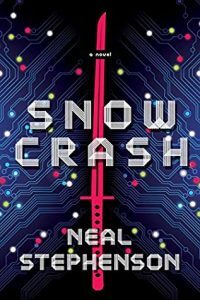 [GDM] You were on Obama and Bill Gates’s summer reading list, which is a spectacular honor. What was that like for you?
[GDM] You were on Obama and Bill Gates’s summer reading list, which is a spectacular honor. What was that like for you?
That news didn’t hit until a few months after the book came out and so it was kind of a slow realization–by that point I was absorbed in another project and wasn’t really tracking day-to-day events related to the previous book. When it sunk in it felt a bit surreal. You have to keep in mind that writers just basically sit at home minding their own business most of the time and so there’s no overt hoopla around these things. No one shows up at your door with a brass band. It’s just more pixels on a screen.
[GDM] Are there any “geek culture” things that excite you? Are you a fan of any of the franchises or series out there?
The overall megatrend–which is so slow and relentless that it’s easy to lose sight of–is the way that geek culture has come to dominate popular culture to an extent that the fandom of, say, the 1960s could never have dreamed of. No one, even as recently as a couple of decades ago, could have anticipated the ascendancy of Marvel Comics Universe or of video games as cultural phenomena.
Currently I’m interested in game engines as culture media for new creative work.
I have a soft spot for anyone who is trying to break new creative ground, and am grumpy when I see old things being rebooted. Mostly that’s because I’m thinking about the decision-making process within studios that leads to such projects being funded.
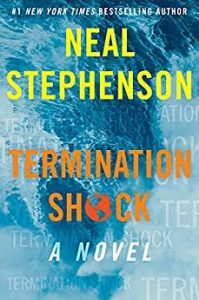 [GDM] It has been 30+ years since you wrote The Big U. Obviously, the publishing side of writing is vastly different, but has your story creation process changed between The Big U and now Termination Shock?
[GDM] It has been 30+ years since you wrote The Big U. Obviously, the publishing side of writing is vastly different, but has your story creation process changed between The Big U and now Termination Shock?
The big change is just having enough word count under my belt that I’m able to generate higher quality first draft copy and not have to spend as much time going back over what I wrote and fixing rookie mistakes.
[GDM] I watched a video from 2006 where you talked about your process of writing. You started with a pen, writing longhand. Do you write with a pen still? What about writing with a pen helps your creative process? Do you have a favorite pen type?
To the previous point, writing longhand (which, yes, I still do) generates higher quality first draft copy because it’s slower. It’s also just more flexible for editing, I can cross a word out faster than I can select it with the mouse and hit “backspace.” I use a few different pens and inks, no particular preference. I rotate pen and ink color from one day to the next so I can see where the breaks happened. I use finer nibs and different colors for editing.
[GDM] In the vein of the form versus function argument, are your books created first around a central idea, such as the moon exploding, then fleshed out with a narrative and characters. Or, do you have an idea of characters first and a basic storyline that you then insert a broader central idea into it?
It can go either way, but the key thing is that you have to have a yarn. A good story you can tell. There are multiple ways to get there and so for me the answer is different with every book.
[GDM] Are you tired of dystopias? Do current dystopias in film and books serve the same social purpose as dystopias did in classic science fiction?
I first realized that dystopias had jumped the shark a number of years ago when I was browsing for something to watch on Apple TV and saw a whole category devoted to “future dystopias.”
[GDM] You often have tangential information in your books that, while not directly related to the story beats, offer the reader information that helps build a broader view of the story’s main idea or for specific characters in it. How do you decide the level of complexity for tangential information? There are quite a few deep rabbit holes that a reader can dive into in any of your books.
It’s a storytelling technique that can be consciously applied in a number of different ways. Probably the best known example in my work is the Cap’n Crunch digression in Cryptonomicon. While on one level it’s a complete digression from the ostensible plot of the book, it does convey information about how this character perceives the world, and helps to set a scene in a concrete and almost palpable way.
In other cases, such digressions can be used to set the stage for future events in the plot. If you learn a little about the physics and engineering behind what is going on in the story, you’re primed for developments that may come along a few pages or chapters later.
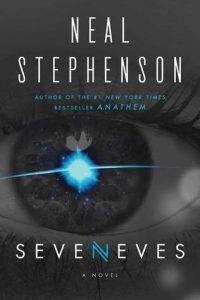 [GDM] Speaking of tangential asides, do you have a favorite rabbit hole you dove into for any of your books?
[GDM] Speaking of tangential asides, do you have a favorite rabbit hole you dove into for any of your books?
I have a soft spot for the wisdom tooth extraction bit in Cryptonomicon.
[GDM] There is a tradition in early science fiction to be predictive. For instance, 2001: A Space Odyssey predicted Face Time, Fahrenheit 451 predicted earbuds, and Neuromancer predicted the internet. Due to the speed at which technology is changing, is expecting a science fiction writer to predict where science and technology are going now an impossibility?
It’s generally not about prediction. It’s talking about the present through the lens of an imagined future that will probably never happen.
[GDM] You have a new book coming out this month, Termination Shock. Could you tell us a bit about it?
The title refers to a hypothetical catastrophe that could happen in a case where someone intervened in the climate but then stopped doing so, causing the climate to snap back suddenly to what it would have been without the intervention. In my story, a rogue billionaire takes unilateral action to intervene in the climate by using a stratospheric veil to bounce back part of the sun’s energy and cool the planet. This is already a fait accompli at the beginning of the book and so most of it is about the geopolitical reaction to what this man has done. Some people are in favor of the intervention, others opposed, depending how it alters the climate of their part of the world.
[GDM] People talk about climate change through a political framework. Was it challenging to write a story that toes the line between the two polarized sides?
The answer to that problem is to show realistic characters having realistic arguments about it–which is what would actually happen!
[GDM] Individuals tend to boil down climate change down to a simple idea when it is not. Is it possible to have useful conversations regarding this issue? Is it a problem caused by social media and shortening attention spans?
The world’s reaction to COVID–which unfolded as I was writing this book–showed us that it’s impossible to get many people to believe in the existence of a disease that is placing them and their loved ones in immediate danger and causing hundreds of thousands of people to drop dead all around them. Trying to communicate about human-caused climate change is far more difficult than that, given that the consequences are mostly far away and detectable only by scientific instruments and statistical analysis. It would be difficult to get people to understand these facts even if social media weren’t pouring highly optimized disinformation into their heads.
[GDM] One of the main plot points of Termination Shock is the idea of a rogue person doing a significant geoengineering event. It seems like this type of scenario is the only way we will get something done?
The time will probably come when some country, somewhere, will make the determination that it’s in their national self-interest to intervene in the climate through geoengineering. At that point, I don’t see why they would hesitate to take such action. Many countries routinely spend billions of dollars developing nuclear weapons because they have made up their minds that it’s essential for national security. Putting some stuff in the stratosphere would be much easier and cheaper than that. So, I doubt that it will be a lone billionaire but I wouldn’t be surprised to see a national government attempt it.
Interview Originally Appeared in Grimdark Magazine
Check Out Some of Neal's Other Works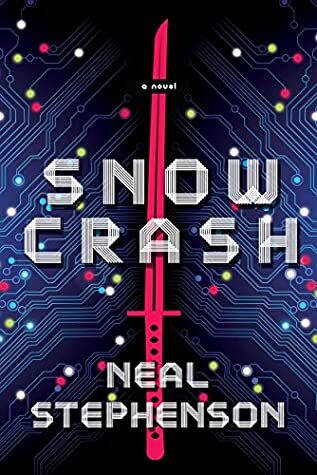
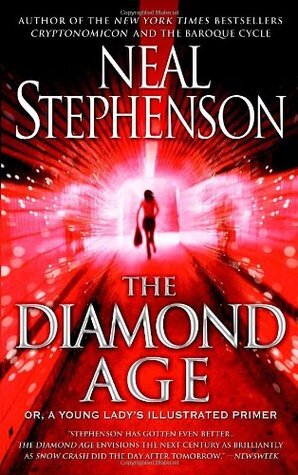
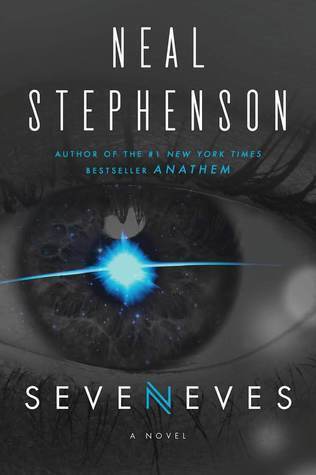
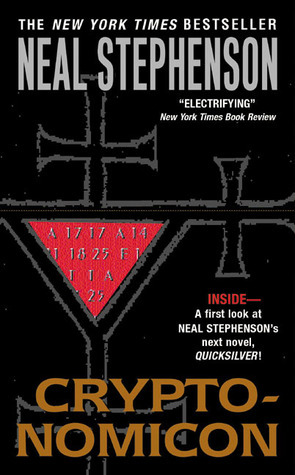
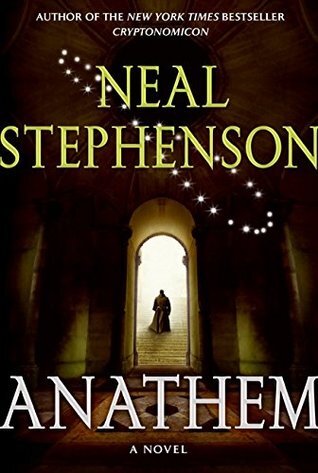 Check Out Some Of Our Other interviews
Check Out Some Of Our Other interviews Interview – Kristyn Merbeth Author of the Nova Vita Protocol
Interview – Author Grady Hendrix
November 26, 2021
Review: When Things Get Dark Edited by Ellen Datlow
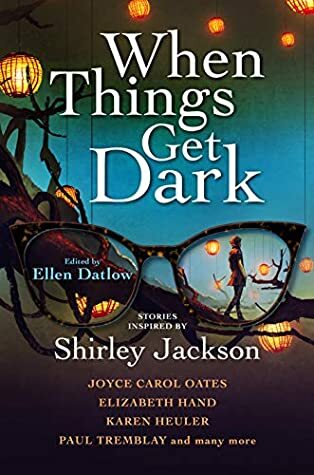 check it out here
check it out here BOOK REVIEW
WHEN THINGS GET DARK EDITED BY ELLEN DATLOW November 26, 2021 3:00 pm No Comments Facebook Twitter WordPressWhen Things Get Dark is a new anthology edited by Ellen Datlow. Datlow is a well-respected anthologist, who has won plenty of awards, including the Shirley Jackson Award three times. This made her the perfect choice for this anthology, which is intended to be inspired by Shirley Jackson and her work.
Shirley Jackson was the author of numerous books, but she’s most famous for her short story, “The Lottery,” and The Haunting of Hill House. She also wrote We Have Always Lived in the Castle, and the memoir Life Among the Savages. Her work is horror, but a very specific form, a low-key unease that gets under one’s skin rather than more direct chills.
Jackson’s work tended to center women, and those who didn’t fit in with society. Her writing was often scathing towards society (The Lottery is the most obvious, but also clearly the case in We Have Always Lived in the Castle), but there was also a longing in it for that connection, and a perpetual disappointment whenever it was made. Those are the kinds of stories in When Things Get Dark.
A collection like When Things Get Dark is guaranteed to have a few obstacles. A few of the stories felt like they aped Jackson without bringing in much of their own. One felt like a slow-burn opening and then ended quite suddenly. But the stories that work, work well.
Elizabeth Hand’s For Sale By Owner had a solid grasp on the low-key quality of both horror and humour that infused Jackson’s work. As a youth, a woman used to break into houses, not to steal but just for the thrill of it. As an older woman, she takes up the pastime again and gets a couple other older ladies to join her until they decide to camp out overnight in a long-abandoned but remarkably upkept house. This was far from the scariest story in the book, but it was a joy to read and definitely felt inspired by Jackson.
Benjamin Percy’s Hag took the uncomfortable family elements of Jackson’s work. A journalist and a mother is trying to get a story done before Christmas. She takes the ferry to the island, and discovers her daughter has stowed away with her. The resentment she feels at having to take care of her daughter while working is strong, though not overstated. Strange occurrences happen through the island they’re on as they wait to get back to the mainland, including one scene that was the most vivid moment in the entire collection.
Stephen Graham Jones’ story, Refinery Road, was a great gut-punch of a story. A young man is driving his friends around, trying to get one friend’s mind off her troubles. The violence that erupts is out of nowhere, and impossible, which makes it all the more compelling. There’s no ghost or monster hunting them. As a side note, Stephen Graham Jones also wrote my favorite book of last year, The Only Good Indians.
Kelly Link’s story, Skinder’s Veil, was the strongest in the collection. It used Jackson as inspiration, while very much being a Kelly Link story. It followed a grad student, having difficulties with writing his dissertation and being frustrated by his roommate. He agrees to house-sit a small secluded cabin owned by a man named Skinder, where he’s given two very specific instructions—let in any of Skinder’s friends, and never, no matter what, let in Skinder.
It’s impressive that a book that is to celebrate one woman, whose own work was genre-defining but had a very specific mindset, could offer up such a wide variety. It’ll be coming out just in time for Halloween, so if you’d like a bevy of very different horror stories for the season, I’d definitely recommend it.
Original review appeared in Grimdark Magazine
Check Out some of our other reviewsReview – The Final Girl Support Group by Grady Hendrix
REVIEW – Servant of the Lesser Good by Shaun Paul Stevens
Ryan Howse
I’m funnier without context.
Okay, you want context.
I’m a mid-30s nerd, married, with two kids. Also two cats–Cathulhu and Necronomicat.
I like, in no particular order, tabletop gaming, board games, arguing over books, ancient history and religion, and puns.
I’m unconundrum on reddit.
November 25, 2021
Graphic Novel Review – Mary Wept Over the Feet of Jesus by Chester Brown

By Source (WP:NFCC#4), Fair use, https://en.wikipedia.org/w/index.php?curid=56243974
Stats
3 out of 5 stars
Mary Wept Over the Feet of Jesus
by
Chester Brown
Hardcover, 280 pages
Published April 12th, 2016 by Drawn and Quarterly
ISBN 1770462341 (ISBN13: 9781770462342)
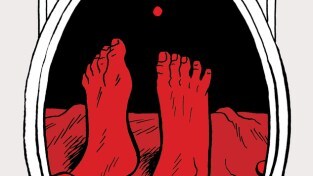 About
AboutFrom the publisher, “The iconoclastic and bestselling cartoonist of Paying for It: A comic-strip memoir about being a john and Louis Riel returns and with a polemical interpretation of the Bible that will be one of the most controversial and talked-about graphic novels of 2016. Mary Wept Over the Feet of Jesus is the retelling in comics form of nine biblical stories that present Chester Brown’s fascinating and startling thesis about biblical representations of prostitution. Brown weaves a connecting line between Bathsheba, Ruth, Rahab, Tamar, Mary of Bethany, and the Virgin Mother. He reassesses the Christian moral code by examining the cultural implications of the Bible’s representations of sex work.”

Mary Wept Over the Feet of Jesus is a fitting follow-up to Brown’s sui generis graphic memoir “Paying for It”, which was reviewed twice in The New York Times and hailed by sex workers for Brown’s advocacy for the decriminalization and normalization of prostitution. Brown approaches the Bible as he did the life of Louis Riel, making these stories compellingly readable and utterly pertinent to a modern audience. In classic Chester Brown fashion, he provides extensive handwritten endnotes that delve into the biblical lore that informs Mary Wept Over the Feet of Jesus.”
My ThoughtsThis novel is a fitting followup to Chester Brown’s “Paying For It;” a practical and positive look at what it is being a John and hiring a prostitute. Paying For It is hailed by sex workers for its advocacy of Prostitution and normalization thereof.
Brown has been a vocal advocate for many years for sex workers, and it is evident in many of his works. He reminds me of a guy who is obsessed with Star Trek, or bugs, or 16th-century weaponry used in northern France. Nothing wrong with being passionate about something, but you wouldn’t necessarily want to be stuck on a road trip with him. He seems very very intense…

This collection is fascinating in how he approached nine individual Bible stories, completely turned them on their head, and presented them in a new way. All the while threading them together into a cohesive thesis on his beliefs. Some of the stories featured are of Bathsheba, the prodigal son, Cain and Abel, Ruth, Rahab, Tamar, Mary of Bethany, and the Virgin Mother. One of his stories shows Mary as a prostitute but still very much loved by God and fit to be the mother of Jesus.
Prostitutes, who often are demonized by the Christian church and society are shown as people who just have a job to do. The novel is definitely polemic, and if you are an easily offended reader or prefer to not read something that has religious overtones, maybe this book is not for you. However, it is a quick read, and sometimes stories need to be turned on their side to see things from a new angle. Whether or not you believe them to be the truth, much as the author does, it doesn’t matter. Enjoy the well-written stories and the simple but still elegant graphics. If these stories intrigue you, and you would like to know more there are 100 pages of notes at the back of the book detailing why he made certain literary and artistic decisions and the research behind them.
I didn’t necessarily like this graphic novel, but it was indeed interesting. Sometimes interesting and thought-provoking are good. I have one of Brown’s other works, Ed the Happy Clown sitting on my shelf waiting to be read. We will see what kind of rabbit hole it leads me down.
Check Out Some of Our Other Graphic Novel Reviews
REVIEW – Servant of the Lesser Good by Shaun Paul Stevens
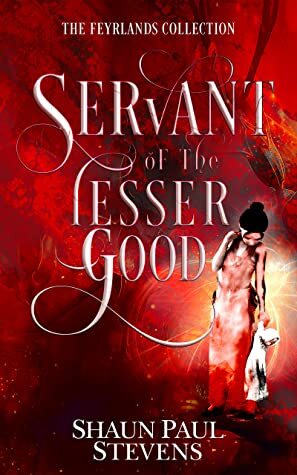 check it out here
check it out here BOOK REVIEW
SERVANT OF THE LESSER GOoD by SHAUN PAUL STEVENS November 25, 2021 11:31 am No Comments Facebook Twitter WordPressThe phrase “Eat the Rich” comes to mind, when contemplating the outstanding fantasy “Servant of the Lesser Good”, by Shaun Paul Stevens.
The book is set in an 18th century / Enlightenment Period-inspired type world, where all of the absolute worst traits of wealth and influential aristocracy are on display. The nobility in the book is depicted as spoiled, vain, callous, selfish and completely self-absorbed, cruel, willful, and completely oblivious to the plight and concerns of those of lower social status.
In other words, they are pretty well utterly vile people, without conscience, who rarely if ever face consequences for their actions. To foil them, some at least close to being as heartless, is required. Enter “Mist”.
The opening of the book is reminiscent of passages from the Stephen King classic “Misery”, on which the chilling movie was based. An innocent woman is being kept against her will, restrained to a bed, wallowing in her own urine. Mist is one of her caretakers, though she is not ultimately responsible for the woman’s captivity.
The captive is just a pawn, a piece in an elaborate scheme, to plant Mist as a servant in the household of the beautiful but shallow and spiteful Talia. Talia is a wealthy socialite who has been embarrassed by her ex-husband’s affair with another woman and his dabbling in witchcraft. Her ex-husband has been imprisoned, but Talia has landed on her feet and secured a new, even wealthier, and more prominent mate in the Count of Brecht.
Talia’s engagement to Count Brecht, however, is an issue for the mysterious forces who want to ensure the two are never married. Mist works for those mysterious forces, and she is far more formidable than she appears. Cunning, trained in martial arts, and of steely disposition, Mist cleverly manipulates herself into Tania’s employment.
But along with staying one step ahead of Tania and her other staff, lest Mist being discovered as a fraud, the fake-maid must cope with Talia’s peculiar daughter, for whom the hardened Mist has a soft-spot. Tania’s daughter seems to be a soothsayer, and possibly channeling powers of the occult, like her father. That is just the beginning of the strange and disturbing circumstances that surround Mist, as Talia – an expert harpist – prepares to perform in the notorious Cursed Symphony.
With creepy intrigue and suspense, enchanting prose, sprinkled with a few great action sequences, Stevens will draw the reader into a world of the amoral, the heartless, the desperate, and the despicable. The secondary characters are conflicted at best, downright detestable or outright evil at worst. There are very few if any “good” people in the book.
We even wonder if Tania’s little daughter, a pitiful figure, treated horribly by both her mother and her governess, is not possessed by sinister powers. Everyone in the book has an ulterior motive, and angle, someone or something else they are trying to exploit for their own gain. This includes the protagonist, Mist.
Mist has a heart underneath her tough-as-nails exterior, but that heart gets in the way of her mission. She struggles with unwanted guilt for being part of the clandestine mission, which has dire affects on innocent bystanders. Mist also grapples with a substance abuse problem, and her addiction threatens to overwhelm her. I loved her character – flawed, messy, and very human.
The plot makes for a compulsive read. Tantalising piece by tantalising piece, the true nature of who Mist really is, and why Mist and those she truly works for (and who they are) want so badly to prevent Talia from marrying the count, is revealed. I found myself reading late into the night, saying to myself “just one more chapter”, and then going for one more.
The worldbuilding is excellent. The author’s descriptive and lyrical prose makes it easy to envision the surroundings Mist finds herself in. The soulless high society, the criminal underworld, the commoners caught in the middle, and the places they all inhabit, were all evocatively, and very realistically detailed by Stephens. I believe fans of Scott Lynch and “Lies of Locke Lamora” would find a similar affinity for Stevens’ work.
Once more, my refrain about compelling themes capturing my attention every time rings true with this book. Stevens vividly paints a gritty, violent, uncharitable world, where money and social status mean everything, and the so-called well-bred are the worst behaved. Steven’s writing, and the issues he explores. left a distinct impression on me, in a good way.
“Servant of the Lesser Good” was a thrilling read, and I will definitely be anticipating a sequel. Steven’s other novels have promptly been added to my TBR, after truly enjoying this book.
*I received a free ARC of this book in exchange for an honest review which I have provided below.
Check Out some of our other reviews
Review – The Final Girl Support Group by Grady Hendrix
Review -; Beneath A Brass Sky by Eli Steele
P.L. Stuart
I’m an experienced writer, in that I’ve been writing stories all my life, yet never thought to publish them. I’ve written informally – short stories – to entertain friends and family, for community newspapers, volunteer organization magazines, and of course formal papers for University. Now, later in life, I’ve published what I believe is a great fantasy novel, and definitely worth reading, called A Drowned Kingdom. My target audience is those who enjoy “high fantasy”. A Drowned Kingdom is not “dark fantasy”. It’s written in a more idealized and grandiose style that I hope isn’t too preachy, and not too grim. Still, I’m hoping my book has appeal to those who don’t typically read this type of work – those who don’t read fantasy of any kind – because of the “every-person” themes permeating the novel: dysfunctional familial relationships, extramarital temptation, racism, misogyny, catastrophic loss, religion, crisis of faith, elitism, self-confidence, PTSD, and more.
Many of these themes I have either personal experience with, or have friends or family who have dealt with such issues. I’ve had a long professional law enforcement career, undergone traumatic events, yet been buoyed by family, faith, and positivity. I’m a racialized middle-aged man. I’ve seen a lot of life. Ultimately I want the planned series, of which A Drowned Kingdom will be the introduction, to be one of hope, and overcoming obstacles to succeed, which I believe is my story as well. My protagonist, Othrun, will undergo a journey where he’ll evolve, change, and shape a continent. He’s not always likeable. He’s a snob, bigot, is vain, yet struggles with confidence. He’s patriarchal. Overall, he’s flawed. But even ordinary flawed people can change. We’re all redeemable.
Ordinary people can make a difference, not just fictional Princes. I want that message to shine through my work.
WHERE TO FIND HIMTwitter – @plstuartwrites
Facebook – @plstuartwrites
If You Liked This - Please Share the LoveNovember 23, 2021
Review – Beneath A Brass Sky by Eli Steele
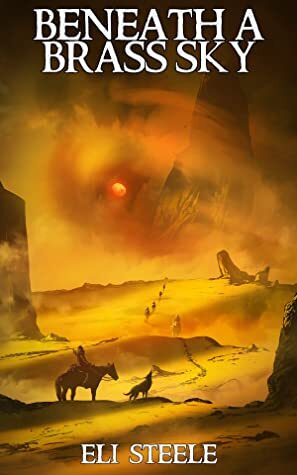 check it out here
check it out here BOOK REVIEW
beneath a brass sky by eli steele November 23, 2021 11:56 am No Comments Facebook Twitter WordPressWhat it is about?“A gust moaned in from the east, carrying with it thick smoke that reeked of scorched stone, and charred timber, and seared manflesh, and half a hundred other odors acrid and unknown. A bouquet of slaughter…His eyes burned.”
Ulfric Halehorn is a sellsword that believes in the sanctity of the contract. He’s also rekindled an old grudge, incited a riot, and landed himself in jail on enough counts to see himself hung twice. In the midst of this, he somehow managed to win a lucrative contract to transport a mysterious crate across the Brasslands to Kush.
He’d be better off if he hadn’t.
Days into the journey, Ulfric learns that the job is more than it seems, and that he carries with him the spark that may touch off a revolution that could burn across a city, and perhaps an entire region. Knowing this, Ulfric sees a chance to atone for breaking another contract nearly a decade ago — one that cost another city its freedom and its people their lives; an act that still haunts him to this day.
But the Brasslands is a vast land, filled with fugitives, and wild beasts, and nameless things that lurk in the low dark. In those wastes also rides another — one charged with snuffing out the same revolution that Ulfric aims to set afire. And as these rivals drive towards their opposing goals, a storm of steel and blood is building on a bleak horizon.
BENEATH A BRASS SKY is a fantasy novel that fans of Abercrombie’s Red Country, King’s The Gunslinger, and Sanderson’s Alloy of Law will enjoy.
I happily admit I have a soft-spot for indie authors. The courage required to captain the ship of creativity, development, editing, revision, formatting, publishing, promotion, and marketing is inspirational. Applause all around!
Beneath a Brass Sky by independent author, Eli Steele, is a fantasy adventure tale told from the third-person omniscient POV which follows Ulfric Halehorn and his band of sellswords as they embark on a dangerous mission across the Brasslands. From the beginning readers are dropped into an unfamiliar terrain with often confusing yet compelling power structures. Still, Halehorn, former Lord of Wyrmwatch from Prydia, has made his way to the lieutenancy of a sellsword company.
He’s turned his back on his rightful place in the nobility for a life on the road, securing contracts, and working in the company of men whose demons are as familiar as his own. When his company, the Fives, secures a contract to deliver “something” valuable to the coastal city of Kush, his survival and drive for justice are put to the test.
Set upon by brigands in the Brasslands, a vast sprawling desert which divides the continent, Ulfric is knocked unconscious and awakens to find that only he and one other, Spero the Banker, have survived the attack. Halehorn is promoted to Captain by default and the two join forces with a mummer’s troupe for security in numbers. Determined to meet the terms of the contract and make the delivery to Kush, Halehorn’s contingent of misfits encounters a band of men led by The Huntsman, a charismatic, enigma who draws followers to him and leaves a destructive, killing trail in his wake across the Brasslands.
Following a trail of crucified men, scalped corpses, and defiled children, it isn’t long before Halehorn and Spero realize The Huntsman is also headed for Kush. This realization redoubles their urgent push to the city and their desire to put an end to The Huntsman’s murderous path.
With a mind-bending cast of characters (GoT fans will be thrilled), and a dizzying landscape which demands a map which is, sadly, not included, Steele delivers world building prose which borders on purple at times.
“A gust moaned in from the east, carrying with it thick smoke that reeked of scorched stone, and charred timber, and seared manflesh, and half a hundred other odors acrid and unknown. A bouquet of slaughter…His eyes burned.”
Occasionally, it is difficult to keep track of who’s speaking, why they’re important, where they are, or where they’re going. But, it really doesn’t matter. The blistering plot moves inexorably forward as quickly as Halehorn’s quest across the Brasslands; racing across endless dunes, winding through slot canyons, clambering over towering mountains, always on the lookout for dangers both real and imagined.
Rife with misunderstood magics, creatures both familiar and strange, friendships forged and lost, Beneath a Brass Sky is worth the read and Ulfric Halehorn is a compelling, complicated hero. “And if rage was this sweet, it’s all I’d ever eat…”
Understand this before you venture into the Brasslands, “This is a hollow country – never forget that – all it does is swallow things up.”
Check Out some of our other reviewsReview – The Final Girl Support Group by Grady Hendrix
Review – Gild by Raven Kennedy
Whitney Reinhart
Whitney Reinhart is a reader, writer, sometimes editor/coach currently pursuing an MFA in Creative Writing because she believes every one has at least one story to tell. She lives (for now) in eastern Arkansas with the world’s smartest man and two Siberian Huskies posing as study buddies. Her work can be found on PocketFiction.co.uk and Fleas on the Dog. .
WHERE TO FIND HERVisit her website, meanderyme.com, for links, book reviews, writing tips, and sign up for her monthly newsletter, Wanderings
If You Liked This - Please Share the Love
